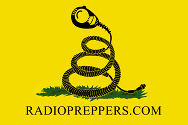This is actually more realistic than you might imagine. Long range sailors often seek advice for conditions, injuries and etc. when thousands of miles from anywhere. A sailboat is not fast enough to get to help and often even a fishing boat may have immediate need of advice. I've heard it done on the ham bands for a fishing boat crew member who had been knifed by a Guatemalan crew member. The radio doctors walked the Captain through how to initialy stabilize the patient, take vitals, then posiition him for best chance of survival ... the list went on. The boat was off of the Guatemalan coast and their coast guard really was not interested at all. The U.S. ham radio operators who put the doctors on the radio got in contact with the U.S. Coastguard and U.S. Navy and the Navy was going to respond with assets in the area. This embarrased the Guatemalans into taking action and sending a cutter. The boat captain sounded U.S. and had no ham license , but when unable to raise anyone other than the unresponsive Guatemalans, he went to 14300 - The Maritime Mobile Service Network (ham radio) and THEY got things rolling for him - license or not, it was a boni fide emergency and a matter of life or death.
In a societal breakdown, this would also be much safer for the Doctor, if he were ABLE to render assistance by radio, it would mean no traveling for him, which is generally dangerous during a SHTF situation for the obvious reasons. Digital modes such as WINMOR would even allow a person to send pictures of an injury/infection & etc. for the doctor to look at, including from a country doctor in need of a consultation with a specialist.
"Uuuuuh - no Doctor - that looks like your Rolex, not a cervex. Were you wearing a wrist watch at the time of the last procedure and are you CERTAIN that you were still wearing it after you finished?"
::)
>de RadioRay ..._ ._
In a societal breakdown, this would also be much safer for the Doctor, if he were ABLE to render assistance by radio, it would mean no traveling for him, which is generally dangerous during a SHTF situation for the obvious reasons. Digital modes such as WINMOR would even allow a person to send pictures of an injury/infection & etc. for the doctor to look at, including from a country doctor in need of a consultation with a specialist.
"Uuuuuh - no Doctor - that looks like your Rolex, not a cervex. Were you wearing a wrist watch at the time of the last procedure and are you CERTAIN that you were still wearing it after you finished?"
::)
>de RadioRay ..._ ._
